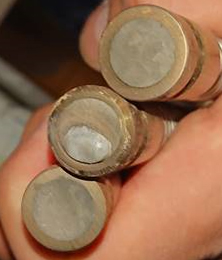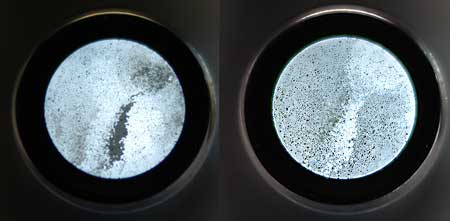
Even though fiber optic products are made using tiny glass fibers, the general product is very rugged. Under normal conditions, fiber optic products can last for decades. Do you know the leading cause of fiber system failure? Overheating of the end tip, due to loosely packed fiber bundles. Why? When bundles are not tightly packed, there is more room for epoxy, which absorbs, rather than transmits energy striking the face. If the cooling configuration is not optimal, there’s no outlet for the heat to dissipate, so heat builds up in the epoxy. This absorption eventually creates enough heat to burn the adhesive and melt the glass! This is a perfect recipe for eventual failure.
If your application is becoming light starved, and old lamp(s) are not the cause, remove the fiber inputs and examine them. The effects of heat damage are easy to spot; the center of the fiber bundle is rough and dirty… in the worst cases, the center is depressed and burned.
The best way to avoid this condition is to insist the bundles are tightly packed, with an assembly packing fraction greater than 93%.
Another mitigating approach to overcome burning is to install a “Homogenizer” between the fiber and source. A homogenizer does two things; it makes the output from the lamp more uniform, and moves the focal point away from the fiber face.

Poorly packed bundles also contribute to fibers being skewed in the end tip.
Skewed fibers are not parallel to the light path. When skewed fibers are ground and polished, they will not behave the way the engineer intended; and the light exiting or entering the component will be offset from the optical axis. This will create an expanded focal spot and a reduction in brightness within the field of view.
Sometimes, even taking the usual precautions, a fiber bundle will fail from heat.
The root cause could be a fiber optic design not meant for the source; the energy is too high, the environment is too dirty, or the light source ventilation ports are occluded.
Most users don’t think about a fiber bundle’s vulnerability to failing when exposed to high optical power. To avoid system failure, expensive downtime, and unnecessary replacement costs – make sure to fully explain your application and throughput requirements to the designer…and don’t forget to ask about the packing fraction!
